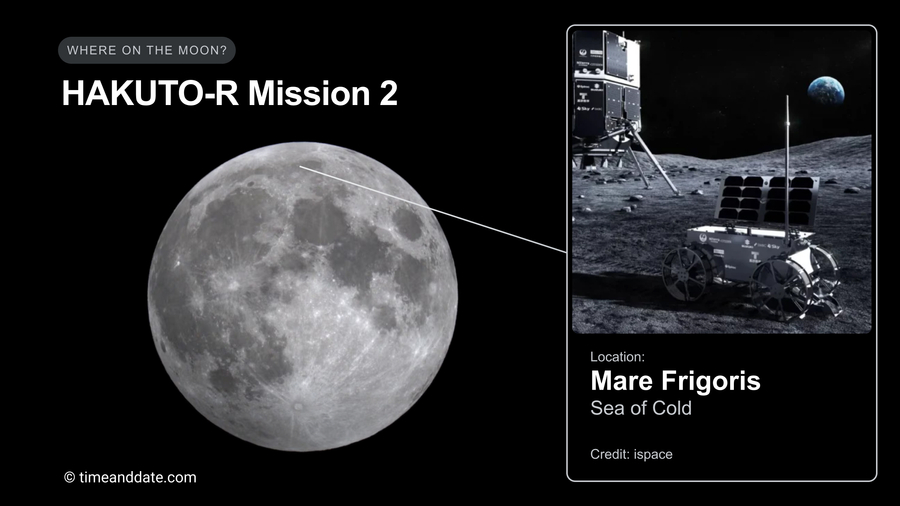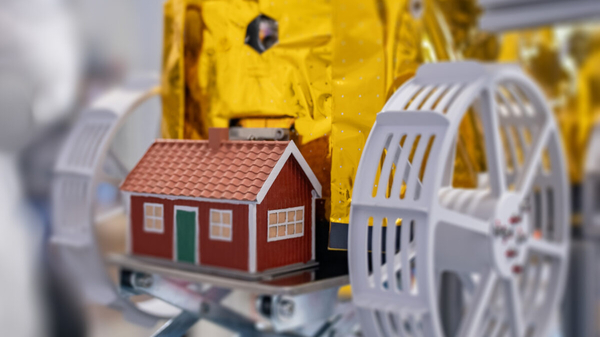
Sadly for our friends at ispace, HAKUTO-R Mission 2 crashed as it attempted to land on the Moon.
In a statement on June 6, the company said: “The laser rangefinder used to measure the distance to the lunar surface experienced delays in obtaining valid measurement values. As a result, the lander was unable to decelerate sufficiently to reach the required speed for the planned lunar landing.”
Next Moon Landing
As we gaze up at the Moon during June— Full Moon is on June 11—we might want to think about a small robot at work on the lunar surface.
Moon guide for JuneAround June 6, 2025, the RESILIENCE spacecraft will attempt to land in a region of the Moon called Mare Frigoris, which means Sea of Cold.
RESILIENCE will release the TENACIOUS micro rover, which is equipped with a camera and a shovel. TENACIOUS is also carrying a piece of artwork called Moonhouse—see the photo at the end of this article.
It’s all part of HAKUTO-R Mission 2, operated by the Japanese company ispace. Hakuto means white rabbit: according to Japanese folklore, there is a white rabbit who lives on the Moon.
“Interesting Features to Investigate”
Why was Mare Frigoris chosen as the landing site for HAKUTO-R Mission 2? We asked Sophia Casanova, a lunar scientist at ispace-EUROPE in Luxembourg.
“In this mission, above all else, safety was our priority,” Sophia tells us. “We wanted a very flat, stable terrain. But in addition to that, we wanted a site where we can find some interesting features to investigate.”
The Mare Frigoris is a basaltic lava field plain. It’s characterized by large tectonic features referred to as wrinkle ridges, which are stress features that extend across the mare basin.
We’re not landing in close proximity to any of these features as they could pose a risk. But what we would hope to potentially find is indications of volcanic and tectonic history that we can pick up at the scale of our rover.
Sophia Casanova, ispace-EUROPE
Sophia and her team are hoping to get images of crater basins, plus the ejecta material that is thrown out when space rocks smash into the lunar surface.
“Imaging those features can give us insight into what happened earlier in the Moon’s geologic history,” she says. “These would be some exciting findings!”

Dates in this article are given in UTC. Thanks to the team at ispace for their help with this article.
